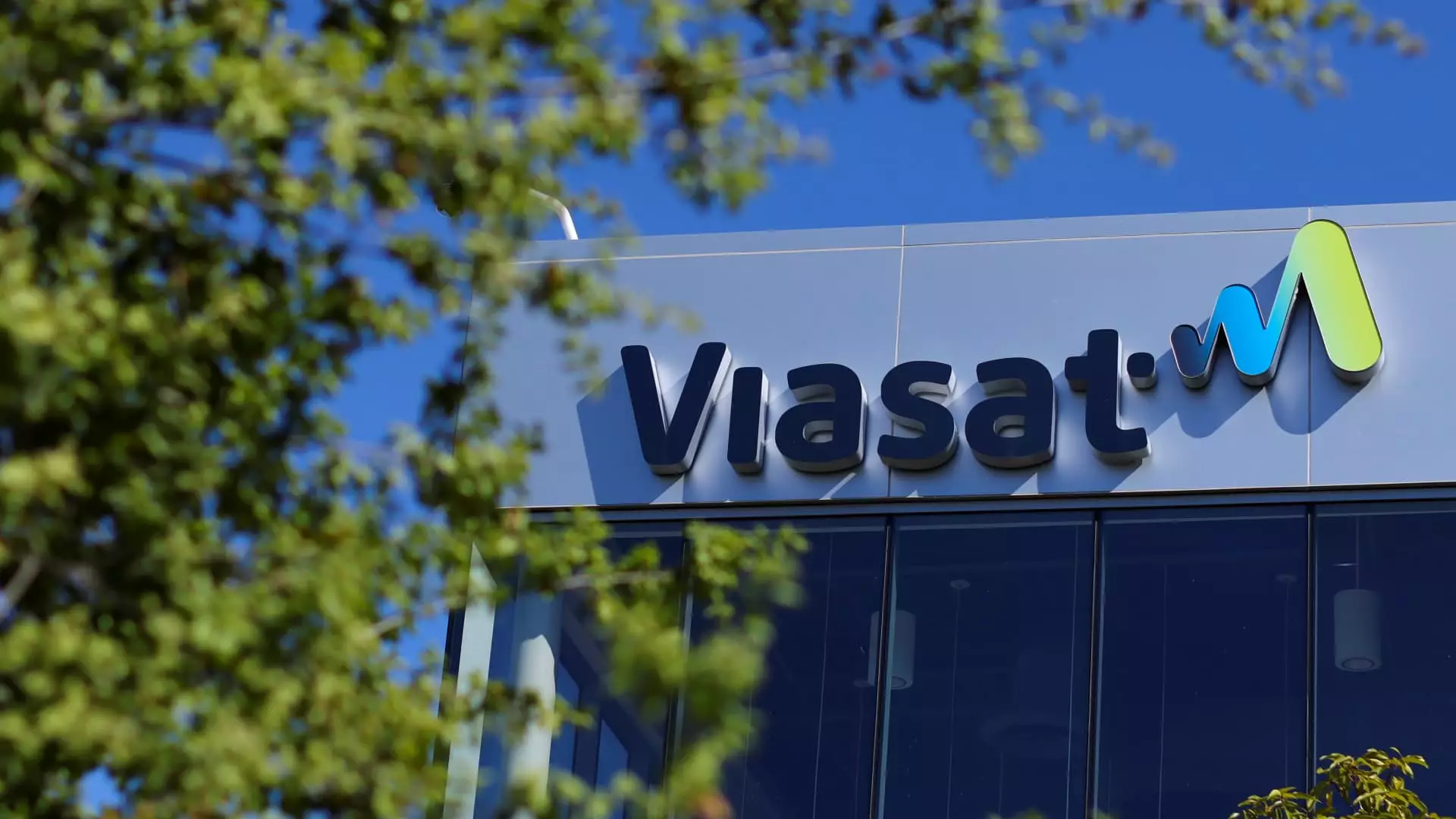On a day that sent shockwaves through the investment community, Viasat’s stock skyrocketed by over 50% following a pivotal recommendation from Deutsche Bank analyst Edison Yu. The sheer velocity of this increase speaks volumes about market sentiment and investor confidence. Yu’s upgrade from “hold” to “buy” signifies not just a momentary surge but a potential paradigm shift in how investors perceive the company’s capacity to navigate its debts and leverage its assets effectively. As Yu elucidated, the pathway to unlocking substantial equity value lies in Viasat’s ability to materially deleverage through astute asset monetization strategies.
Indeed, the promise of recovery and growth is a powerful motivator in the stock market. Investors are catching the winds of optimism, propelled by the notion that Viasat can regain ground lost to formidable competitors like Starlink, owned by Elon Musk’s SpaceX. This upgrade could be a watershed moment, transforming Viasat from a stagnant player to a vigorous contender in the satellite communications landscape.
The Shadow of Starlink: A Looming Challenge
However, the optimism surrounding Viasat’s upgrade cannot overshadow the dark clouds cast by Starlink. Yu has raised a legitimate caution: the competitive pressures exerted by Starlink on Viasat’s core services remain a significant concern for the long term. With Starlink expanding aggressively into new markets – recent partnerships with major Indian telecom companies being a prime example – it’s clear that Viasat is contending not just with a business rival but with an innovator that is reshaping consumer expectations of satellite internet.
The recent activities of Starlink in countries like India and Indonesia exemplify its strategy of establishing a foothold in territories ripe for disruption. As Starlink poaches consumers with attractive pricing and superior service offerings, Viasat’s market share could be at risk. While investor enthusiasm may momentarily lift Viasat’s stock, the long-term health of the company hinges on its ability to compete against an adversary that is relentless in its pursuit for dominance.
A Short-Term Gamble or Long-Term Value?
Another salient point raised in Yu’s analysis lies in the time frame for Viasat’s potential turnaround. The key takeaway reflects a phased approach; expect tangible results between 12 to 18 months. This perspective suggests that while Viasat may have a roadmap for recovery and future equity value creation, the journey is fraught with uncertainty. Investors must grapple with the question: will Viasat leverage its newfound optimism into strategic action, or will it fumble opportunities while competing against the momentum of Starlink?
Year-to-date performance indicates substantial growth for Viasat, with a reported rise of around 30%, dwarfing the S&P 500 that has succumbed to declines. Such statistics could encourage a short-term speculative play; however, discerning investors should urge caution. The dichotomy of quick gains versus stable growth is ever-present in a volatile market landscape.
Viasat’s recent stock performance is majestic yet precariously tied to the evolving dynamics within the sector. As analysts offer bullish endorsements, one must remain vigilant, navigating the complexities of innovation, competition, and the indomitable spirit of a market hungry for change.

